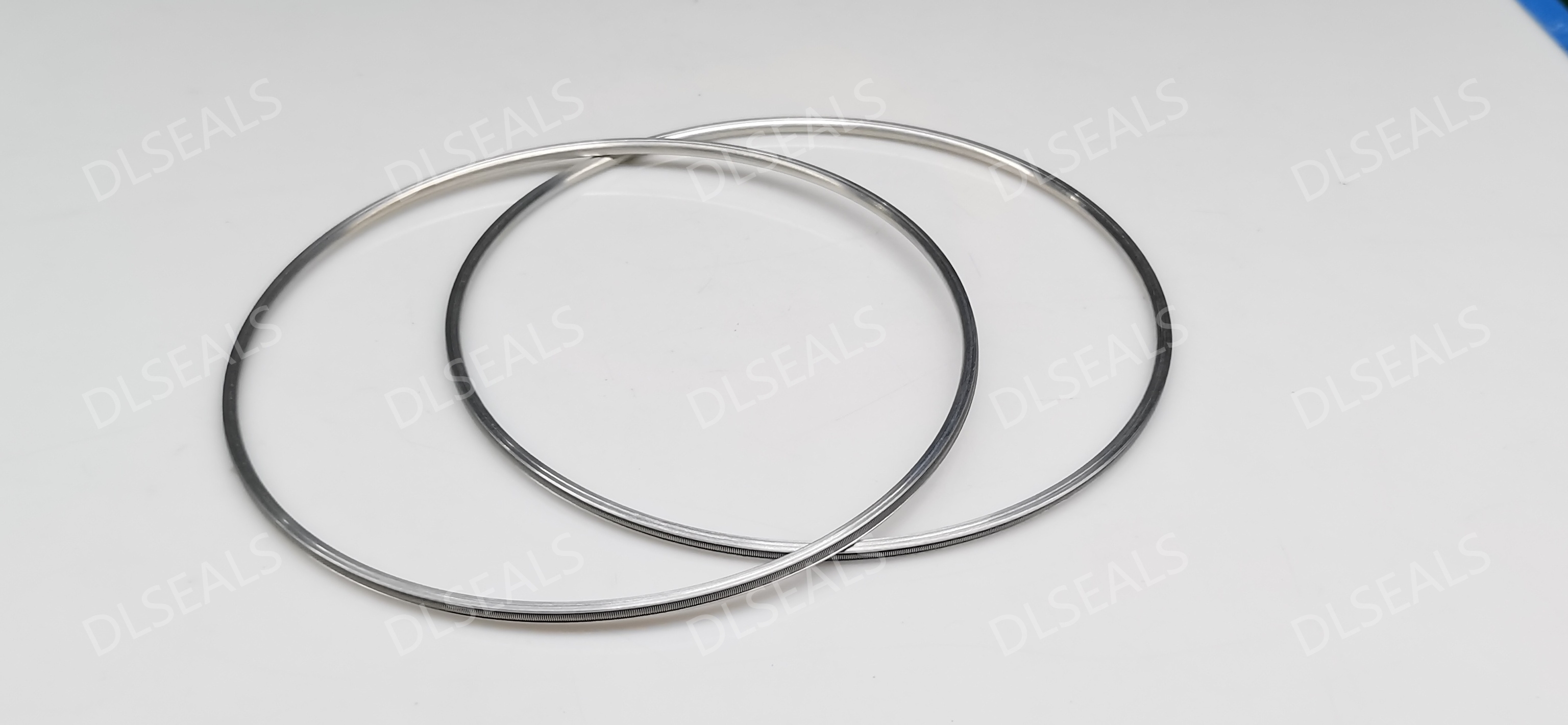
In many industrial applications, metal sealing rings need to work in a wide range of temperatures, from very low temperatures to high temperatures. The temperature adaptability and thermal expansion characteristics of the sealing ring directly affect its sealing performance and long-term reliability. The following is a detailed discussion of the temperature adaptability and thermal expansion analysis of metal sealing rings.
1. Overview of temperature adaptability
Temperature adaptability refers to the ability of metal sealing rings to maintain their mechanical, physical and chemical properties under different temperature conditions. The effects of temperature on sealing rings mainly include the following points:
Changes in mechanical strength:
As temperature increases, the strength and hardness of materials generally decrease, increasing the risk of plastic deformation and failure.
In low temperature environments, materials may become more brittle and prone to cracks and fractures.
Thermal expansion:
The difference in thermal expansion between the metal sealing ring and the parts in contact with it may cause sealing failure.
Thermal expansion also affects the stress distribution and sealing pressure of the sealing ring.
Chemical reactions:
High temperatures may accelerate chemical reactions such as oxidation and hydrolysis of materials, resulting in performance degradation.
2. Thermal expansion analysis
Thermal expansion is the phenomenon that the volume and size of metal sealing rings change due to temperature during temperature changes. The following is a detailed analysis of thermal expansion characteristics:
2.1 Coefficient of Thermal Expansion
Definition:
The coefficient of thermal expansion (CTE) refers to the rate of change of a material’s length per unit temperature change, usually expressed in ppm/°C (10^-6/°C).
Influencing factors:
Material type: The coefficient of thermal expansion of different metal materials varies significantly, such as aluminum, steel, and copper.
Temperature range: The coefficient of thermal expansion of the same material may also be different in different temperature ranges.
2.2 Thermal expansion analysis method
Experimental measurement:
The thermal expansion coefficient of a material is measured using a thermal dilatometer to understand its thermal behavior in a specific temperature range.
Mathematical model:
Numerical simulation tools such as finite element analysis (FEA) are used to predict the deformation and stress distribution of metal sealing rings at different temperatures.
2.3 Effect of thermal expansion on sealing performance
Sealing pressure change:
Thermal expansion may cause deviations between the theoretical and actual values of the sealing pressure, affecting the sealing effect.
Mating surface wear:
Mismatched thermal expansion may cause greater stress between mating surfaces, accelerating wear.
Stress concentration:
Uneven thermal expansion may cause stress concentration, leading to material cracks or fatigue failure.
3. Measures to improve temperature adaptability
3.1 Material selection and optimization
Low thermal expansion materials:
Select materials with low thermal expansion coefficients (such as Invar or Monel) to reduce the impact of thermal expansion.
Composite materials:
Use composite structural materials, combine low thermal expansion substrates with high-strength materials to optimize thermal expansion and mechanical properties.
3.2 Design optimization and compensation
Thermal expansion compensation design:
Add elastic elements or expansion grooves to the sealing ring design to adapt to thermal expansion and maintain sealing performance.
Temperature optimization design:
Reasonably design the operating temperature range of the sealing ring to avoid extreme temperature conditions and reduce the degree of thermal expansion.
3.3 Thermal management and lubrication
Heat dissipation design:
By adding a cooling system and heat sinks, control the operating temperature of the sealing ring and reduce the impact of high temperature on the material.
Lubrication protection:
Introduce appropriate lubricants in the working environment to reduce friction and wear caused by thermal expansion and protect the sealing ring.
4. Performance testing and verification
4.1 Temperature cycle test
High and low temperature cycles:
Through temperature cycle tests (such as thermal shock tests), the performance changes of the material during thermal expansion are observed and its temperature adaptability is evaluated.
Performance decay detection:
Inspect the changes in the mechanical properties and sealing effect of the sealing ring during high and low temperature changes.
4.2 Long-term stability test
Durability evaluation:
Long-term stability tests are carried out within a specified temperature range to evaluate the durability and reliability of the sealing ring under actual working conditions.
5. Application and conclusion
5.1 Application cases
Aerospace:
In rocket engines and turbines, metal sealing rings need to work under high temperature and high pressure environments, and special alloys with small thermal expansion coefficients are required.
Petrochemical:
In petroleum refining equipment, sealing rings are faced with high temperatures and corrosive media, and the design and material selection must take into account both thermal expansion and corrosion resistance.
5.2 Conclusion
The temperature adaptability and thermal expansion characteristics of metal sealing rings are crucial to their long-term performance and reliability in different environments. Through various means such as material selection, design optimization and performance testing, the stability and reliability of metal sealing rings in a wide temperature range can be effectively improved. With the development of nanomaterials and advanced manufacturing technology, the temperature adaptability research of metal sealing rings will achieve greater breakthroughs in the future.
Post time: Nov-07-2024
